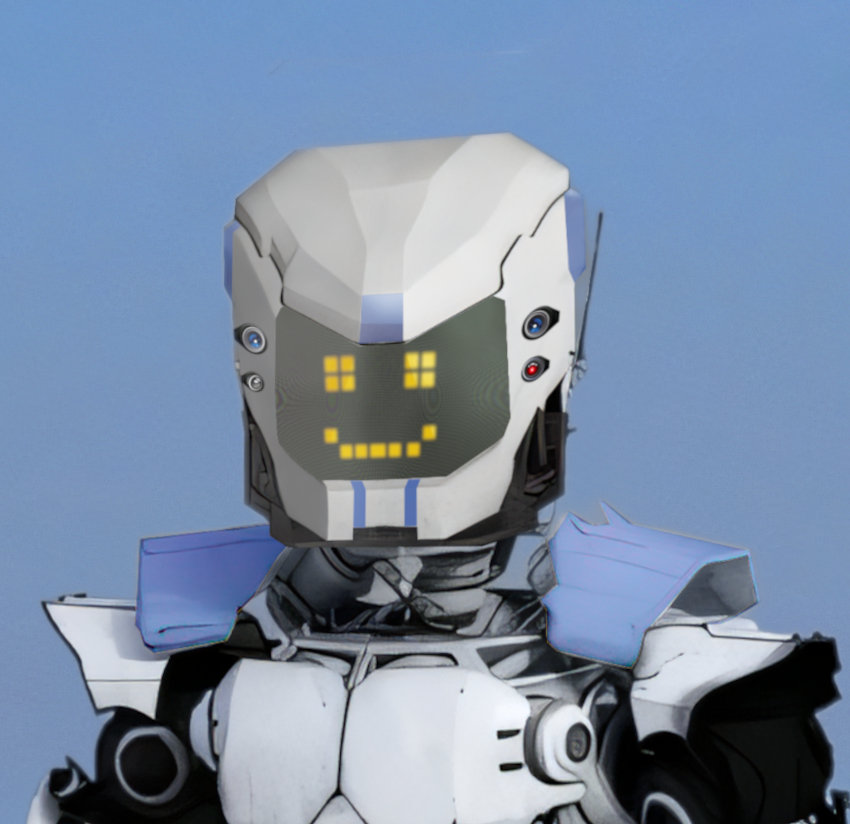- cross-posted to:
- [email protected]
- cross-posted to:
- [email protected]
Is there GTX 1080Ti support?
I was playing on one for awhile before I upgraded. It works but the drivers updates are hit and miss sometimes and I think they ended support(or was planning on it) for the card with the proprietary drivers. You should still be able to run off opensource drivers.
Yes. You have access to both the official, proprietary Nvidia drivers (difficult for the community to improve or configure but best for gaming), and the open source “Nouveau” drivers (which I would consider more “Works for Tails and for a full FOSS ecosystem”, but horrible for games).
No need to visit Nvidia’s website either - you should have 3rd party driver installers built into your distro (and can upgrade/downgrade as needed).
Congrats, nerds.
(I guess I have to include myself in that)

Loooooooooooool
only 3% how is that possible with steam deck or whatever
It dropped after the China market opened up. We are climbing back up again.
It was me guys! I got the poll last week and I am pretty sure my Linux Mint 22.2 pushed it over 3% !!!
Username checks out!
I switched over to Nobara Project 4 months ago and am not looking back! Have tried CachyOS, Bazzite, Mint, PopOS and liked Nobara the best
Could you swiftly describe what makes you prefer nobara over the others?
It comes with eveything for gaming and multimedia work pre-install, the 2 thing I use my pc for. Codecs, steam and proton, Da Vinci resolve, etc. Flagship version uses KDE. There’s a nice little app manager. Really easy installation process. It’s a fedora spin-off so it follows the same release cycle, usually updated within a few days. Updates use to be a bit complicated, breaking drivers, etc. but it’s much more stable these days. There’s not a huge community, basically discord and reddit, but people do try to help. Usually you can follow the instruction for fedora for any tricky installation. Great distro overall.
Looks like that might be my next try. I haven’t had much luck so far :(
I have a lot of drives and nobara comes with a auto mount manager that proved to be very useful. The update manager works great, it by default makes backups with updates to fedora.
It seems they have made the OS extremely user friendly with the ability to still customize.
My computer has been torn down for a while due to a move and renovations, but as soon as I set it up again, the first order of business is to migrate it to mint.
I’m starting to recommend Zorin OS now. They did a really good job with Gnome to customize it into a workable desktop.
In fact, I’m even considering switching from Kubuntu because of how nice and polished it looks.
It’s scary and disorienting, but imo it’s worth it.
I can now say anecdotally I have more friends that have tried Linux and are happier on it, than I have friends who went back to Windows.
Most of the people who went back went back for edge cases, weird hardware or that “one game” that has kernel level anticheat and doesn’t run on Proton.
Quick question: I’m assuming a Linux install requires a complete reformat of the drive, aka having to reinstall / redownload my games, right? Also the cloud saves that I have stored on Steam, would those be transferrable / usable if I install on Linux? Or am I going to have to start out at point zero on those games?
You can also partition or use a separate drive and have both. I took the jump ship and reformat route, but you definitely don’t have to
I’m assuming a Linux install requires a complete reformat of the drive, aka having to reinstall / redownload my games, right?
Not necessarily. You can back up the game files or transfer them from another PC over the local network. You can also install Windows and Linux in different partitions on the same drive but Windows will sometimes eat your Linux install.
Also the cloud saves that I have stored on Steam, would those be transferrable / usable if I install on Linux?
Completely, yes.
Plug an external disk and create a new steam library there, then move all your games to the new library. Now you have a portable library you can take with you on the go. Install Linux then add that library to the Linux Steam client. Now you have all your games back (including cloud saves).
Wow that sounds amazing. Would that work to hook up to your steam deck as well?
Would likely want to do this over a dock because of power consumption. Dunno if it would actually turn it on without it, someone else would have to comment on that
In addition to the other guy who answered you: Technically you don’t necessarily have to reformat you hard drive to install Linux. Many installers give you the option to resize an existing drive and install Linux alongside windows.
Also according your steam library: As far as I remember you can export and import single games and you may be able to move your steamapps directory to your Linux installation but this may or may not work depending on your setup and your games. If you don’t have a limited Internet connection I would recommend just re downloading the games your planning to play.
Cloud saves work fine whether on Windows or Linux.
It depends on the game and service.
But the best thing you can do is just go buy a new 1 tb os drive. Not too expensive, even for nvme, and it guarantees you lose no data. Then you have more storage once you actually know you migrated all the old data.
Yes, reformat. Cloud saves in my experience work just fine.
Yeah same. Once I turned on the compatibility layer everything just worked and I picked up where I left off seamlessly.
There are a handful of mostly-older games that had native Linux ports by third-party porting houses which broke save compatibility between the Windows and Linux versions of the game. However, these old Linux native ports are generally absolute garbage and you’re better off running the Windows version via Proton, which does have compatibility with your Windows saves as it is running the same exact game version. It seems most games with native Linux versions released by the actual developer are fine, it’s just when they offload the Linux version to a porting house that it can get messy. Those old third-party ported games were typically from the original SteamOS/Steam on Linux era (2012-2015 or so) before Proton became a thing though.
It doesn’t require a reformat, no. It depends on what drives you have. It works best to have one drive dedicated to Linux though. In that case you install Linux on a seperate drive and point the Steam library to the existing Windows Steam library. Then you can use all the same game installations on both Windows and Linux and boot back into Windows if you want to.
Are we thanking the Steam Deck or are we thanking Microsoft for ending Windows 10?
Either way, congratulations to those of you who never stopped believing.
There’s a graph on the linked page, but I’m not quite sure what to make of it. According to the overall trend “SteamOS Holo 64 bit” seems to be decreasing but “Arch-based” (which is also what SteamOS is) seems to be the one that is going up the most. Fedora has only recently started being tracked, but they probably came under “Other” before.
Could be a mix of Catchy and other Arch-derivatives, since they are known for good gaming performance (at least before Bazzite hit the mainstream). I would also imagine Valve wants to keep HoloISO separate so developers don’t only target Steam Deck hardware and prevent other distro support (the infamous steamdeck=1 requirement).
CachyOS is what I installed a couple of months ago and it’s been great. The only major challenge I’ve had so far have been with my Windows 11 VM which I need for work. For anyone who doesn’t need Windows-exclusive software to work (Excel 2024, in my case), Linux is easier to use than Windows… But it does have a but if as learning curve if you need to install specific things.
Another example: Omada Controller is needed for my wifi mesh network. Took me a while to figure out that I need to use Podman or Docker for it (after several failed attempts at installing different versions from AUR.) But once I figured that out, it was easier to get running than the official software was on Windows. I think 1 app to install from Cachy Hello and 2 commands in the terminal to get and run the container in Podman. (I even ignored the instructions to use Docker and it worked 100% smoothly on Podman on the first try.)
All my hardware just works without manually installing drivers. Updating almost everything on the system took 1 GUI command a few minutes to run, then less than a minute to reboot. It mounts my old Windows drive no problem.
And it’s so fast. No random slowdowns for Windows search indexing, antimalware executable, “System”. No hours spent needing to debloat and reconfigure Windows 11 to hide all the bullshit… It took me longer to configure Windows 11 in my VM than it did to set up everything in CachyOS.
That said, I’d only suggest CachyOS to someone who can tinker and wants/needs cutting edge (gaming stability/performance improvements, in my case). I’m leaning towards an immutable distro for my wife’s laptop—old hardware, and won’t be used for gaming. Maybe Fedora Kinoite? Windows 10 runs like shit on it, now, even though it used to be plenty fast.
Cachy*
SteamOS Holo*
I want to game on Linux too but can’t because nvidia removed gpu target temp feature on Linux for my potato gpu.
how is nouveau running for your gpu atm?
are you in the 9/10 series limbo?
I would say the next biggest hurdle that Linux gaming has to overcome besides market saturation is the compatibility with triple AAA multiplayer games and getting major developers on board. Franchises like Call of Duty, Battlefield, and Rainbow Six Siege make up a large percentage of the hard-core video game player base and are incapable with Linux due to their Windows level cornel anti-cheat or similar issues.
Yup. Some are doing well (like Microsoft with Halo, surprisingly…), others are actively denying doing anti-cheat on Linux. Here’s the website to track them:












